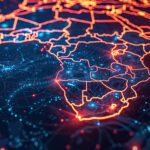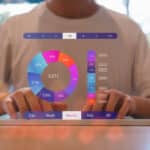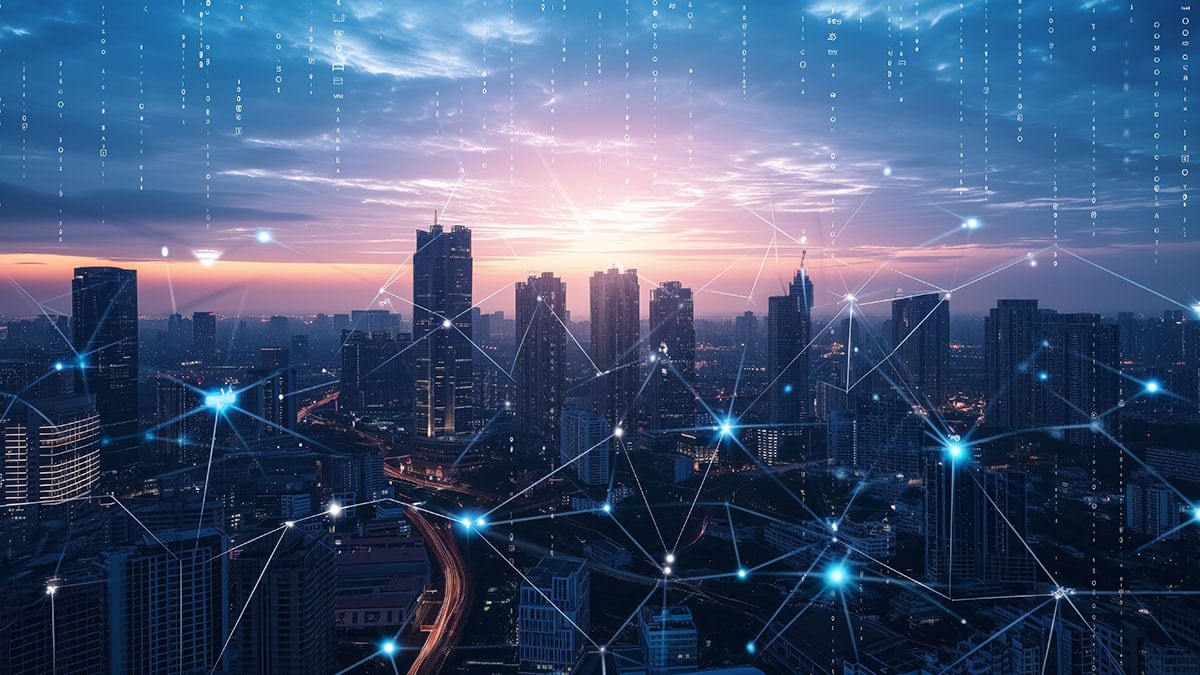Artificial intelligence (AI) is everywhere, from Silicon Valley to remote classrooms, and its potential to shape the future is immense.
Throughout the summer, we published industry-specific articles every week penned by our researchers and guest authors.
Here, we’ve compiled these introductory pieces on AI and Disruptive Innovation in one compelling resource.
Keen on joining the AI conversation or discussing other trailblazing topics? Our senior director of communications, Meris Stansbury, would love to hear from you.
On AI and Disruptive Innovation overall

“Stewardship in AI: Our new series helps see into the future” by Ann Christensen.
Overview: It’s tempting to suggest that it will “disrupt everything,” but that’s certainly not what the theories suggest. The theory of Disruptive Innovation has long demonstrated that an enabling technology will not by itself transform any sector or industry—it needs an innovative business model to bring it to market and a coherent value network of customers and suppliers. With business models and value networks only beginning to form, it’s not obvious how things will go. Further, the theory—and history—tells us that a technology that’s sustaining in some settings can also be disruptive in others.

“What does Disruptive Innovation Theory have to say about AI?” by Michael B. Horn.
Overview: It turns out that it doesn’t make much sense to talk about GenAI as being “disruptive” in and of itself. Can it be part of a disruptive innovation? You bet. But much more important than just the AI technology in determining whether something is disruptive is the business model in which the AI is used—and its competitive impact on existing products and services in different markets.
On AI’s impact in global development

“Can AI technology really create global prosperity? (part 1)” by Efosa Ojomo and Sandy Sanchez.
Overview: To understand the link between technology and prosperity, it’s helpful to examine historical precedent. Specifically, there are two critical hurdles in ensuring that technology eventually yields prosperity: democratization and safety and security (i.e., health safety, physical safety, and economic security).

“Why AI’s business models will determine its potential to ignite global prosperity (part 2)” by Efosa Ojomo and Sandy Sanchez.
Overview: It is important to recognize that AI is simply a technology, albeit one with incredible potential. As such, it resides in the resources component of the Business Model framework. What will matter is how investors and entrepreneurs choose to incorporate the technology into their organization’s business model to serve nonconsumers globally.
On AI’s impact in education

“Looking beyond the hype: AI won’t transform classrooms, but it will help transform education.” by Thomas Arnett.
Overview: Models of schooling that use AI to enable more personalized, self-directed learning aren’t going to evolve out of existing conventional classrooms naturally. Instead, education leaders will need to create the conditions where new models of schooling can emerge and expand.

“Metrics, not just technology, will determine who gains from AI’s productivity gains” by Julia Freeland Fisher.
Overview: Many readers probably hope that with the right tools and policies in place, AI can offer a both-and path – both freeing up educator time and deepening connections; both fixing the current system and, ultimately, transforming it; both unlocking individual productivity and fostering diverse connections. But let’s not forget that a whole new set of student-centered metrics will need to emerge to guide that growth.

“Can assessments be used to eliminate inequities in education? AI could help.” by Dr. Mahnaz R. Charania, former senior education research fellow at the Christensen Institute.
Overview: For students not served well by the limited lens offered by standardized tests, particularly for predicting success outside the classroom, amplifying the power of AI-driven assessments can be a game-changer. These new approaches hold immense disruptive potential: at first blush, this growing list of AI-powered opportunities in assessments may seem “lower quality” compared to the tried and tested standardized assessments dominating the current education market. But they can get a foothold in the vast pockets of nonconsumption of assessment, where the only alternative is not to measure these outcomes at all.

“Preserving community in the age of AI” by Lewis Poché, Associate Program Director of Higher-Powered Learning at the University of Notre Dame’s Alliance for Catholic Education.
Overview: In addition to the conversations around AI-fueled academic dishonesty and AI-enhanced lesson planning, Catholic school educators should be asking the essential questions: “Do we need AI? What is gained and what is lost by its use?” As advocates of personalized learning through technology, innovative educators push the limits of what learning experiences are possible with current technology. Now more than ever, Poche wonders if now is the time to pump the brakes a bit harder.

“HBCUs and the potential for disruptive AI innovation” by Cecilia Marshall, Director of External Partnerships, Partnership for Education Advancement.
Overview: To make good on Disruptive Innovation’s promise, AI-powered solutions must take steps to ensure they’re not further entrenching existing barriers to opportunity. But it can’t stop there–thoughtful design and accessibility are equally important to ensuring that AI becomes a useful tool for all institutions. Partnership with HBCUs, themselves historic engines of social mobility, is central to these goals.

“Using AI analysis to bring out the best in human tutors” by Krista Marks, Strategic Advisor for Saga Education, and Brent Milne, VP of Product Research and Development at Saga Education.
Overview: With the help of AI to enhance human-led instruction, we are learning what magic is at the core of effective tutoring practices. Perhaps the most significant potential of AI for education is unlocking a deeper understanding of what makes certain types of human-led instruction effective—and to help us deliver this most human-centric of interventions at scale.

“AI accreditation for schools: Why innovative tech requires an innovative implementation framework” by Christian Talbot, president and CEO of MSA-CESS.
Overview: Accreditation is a “school improvement” model, which is to say that it is designed for incremental change. But GenAI is spurring rapid changes, for which there are no research-based best practices. There is too much at stake for accreditors to do nothing. That’s why we created RAIL as a nimble and adaptive implementation framework that acts as an endorsement rather than an accreditation. This avoids conflating best practices with promising practices.

“AI’s impact on education: Wider & wiser curricula” by Charles Fadel, Founder and chairman of the Center for Curriculum Redesign (CCR).
Overview: To fully embrace the transformative potential of AI in education, we must rethink what we teach and how we teach, ensuring that students are not only prepared for the jobs of tomorrow but also equipped to navigate the complexities of life with wisdom. Adaptability and self-directed, continuous learning are key. This also means fostering both depth and breadth in learning, where students develop specialized expertise and activate transfer while also gaining the skills, character, and meta-learning abilities needed to thrive in an unpredictable world. By prioritizing these four dimensions—Knowledge, Skills, Character, and Meta-Learning—and by personalizing education and enhancing student motivation through the three drivers of Identity, Agency, and Purpose, we can create an education system that is truly responsive to the demands of the 21st century and beyond.
On AI’s impact in health care

“Generative AI will fuel loneliness: Do we care enough to combat it?” by Ann Somers Hogg.
Overview: As with all innovations, there will be trade-offs. Each time we trade an interaction with AI for a speedy response, we trade-off something else with it. We lose the opportunity to connect with another person. We aren’t just trading off a conversation with a physician for a conversation with a chatbot. We are trading human connection for human disconnection. And the compounded cost of these trade-offs over time has a negative impact on our health.

“Why Jobs to Be Done Theory is helpful when evaluating GenAI’s use in health care” by Ann Somers Hogg.
Overview: Understanding Jobs Theory helps us identify whether GenAI tools or offerings might be a good fit to help people achieve their desired progress. But a Jobs lens alone won’t address all the open issues with GenAI in health care today.

“Is AI developing in the wrong direction?” by Emmanuelle Verdieu, former health care research fellow.
Overview: There is a lot of hype around AI right now, but if companies aren’t seeking to develop products or services based on people’s jobs, they risk a quick rise and fall.



